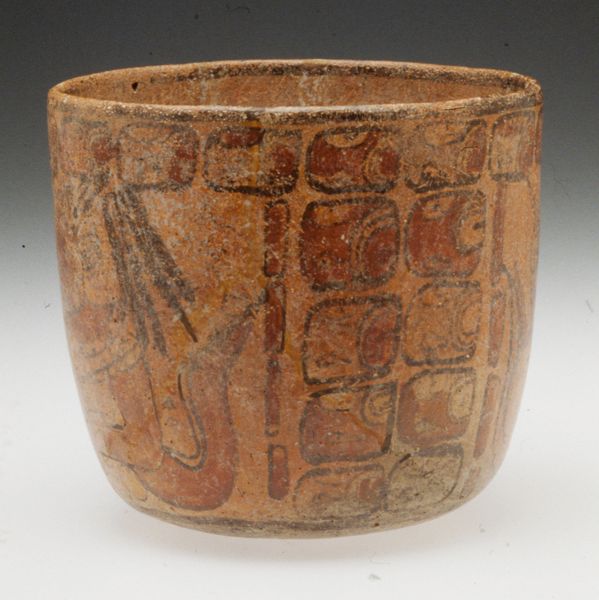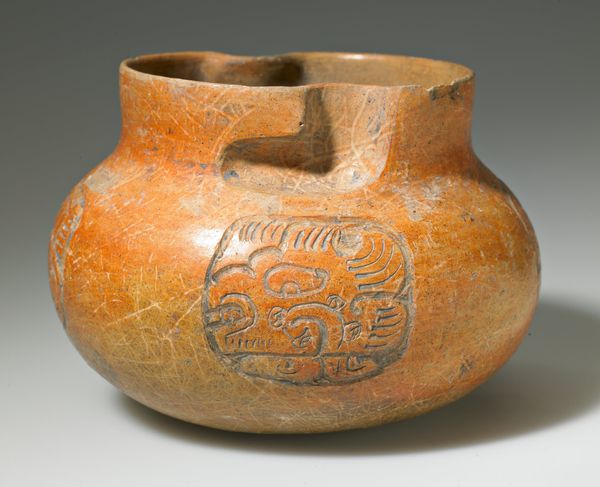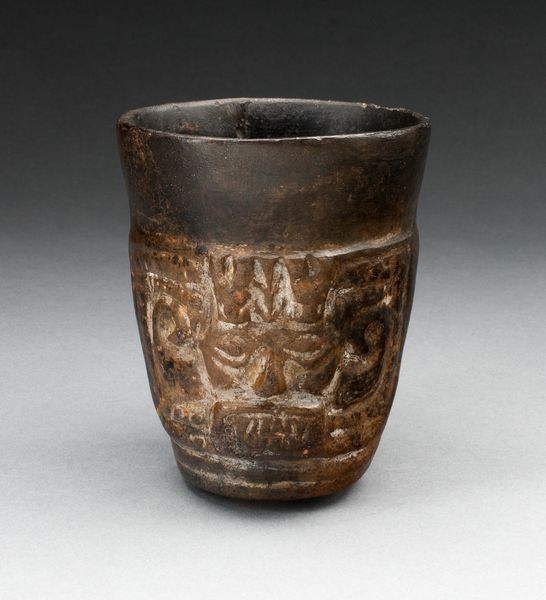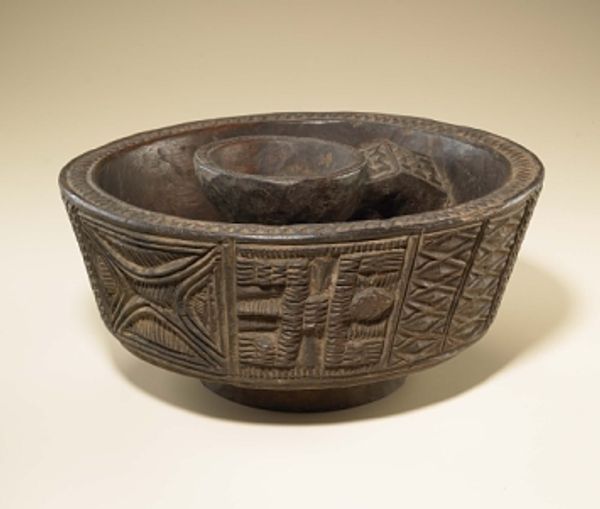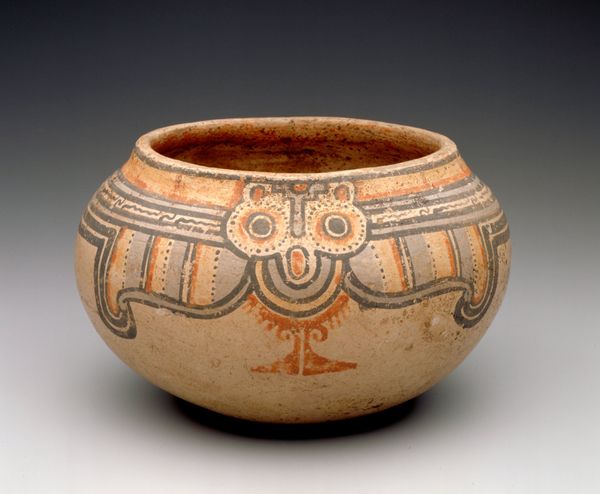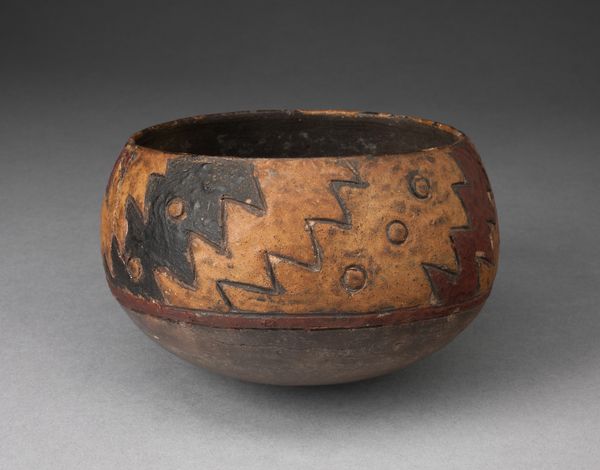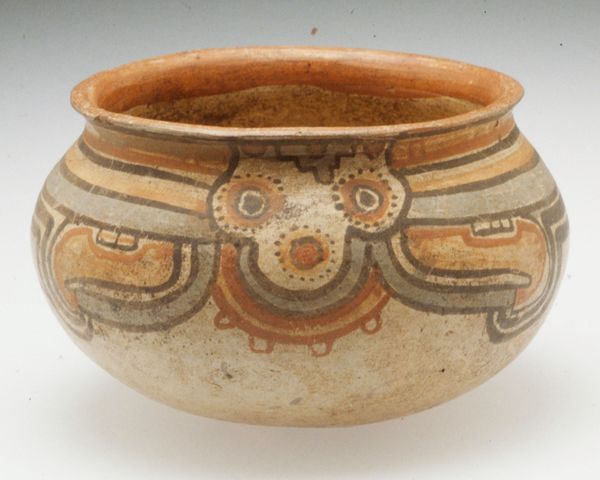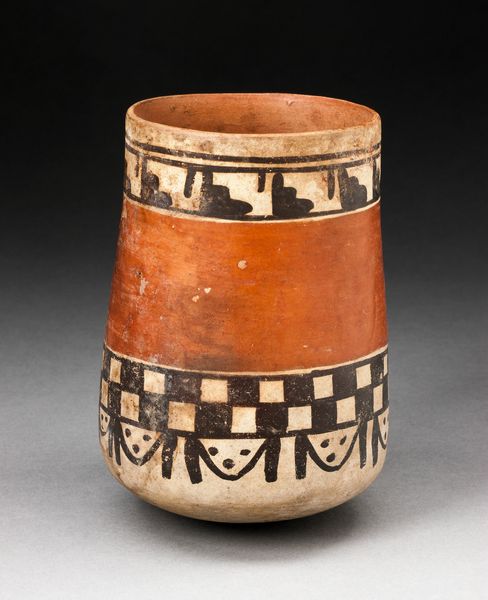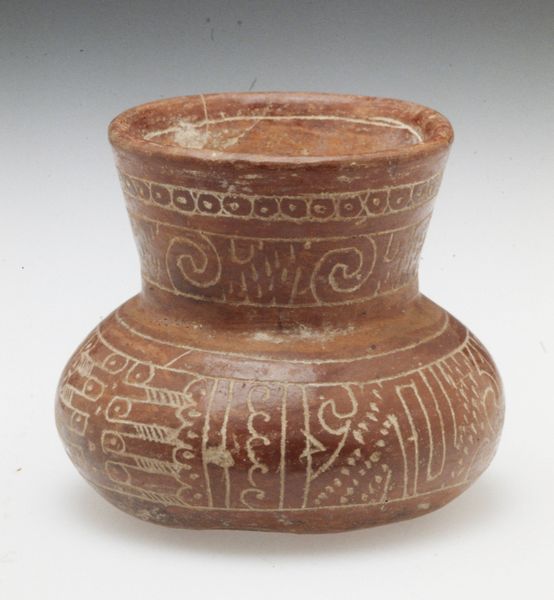
carving, ceramic, sculpture, terracotta
#
carving
#
ceramic
#
form
#
sculpture
#
ceramic
#
terracotta
#
indigenous-americas
Dimensions: 4 1/4 x 5 x 5 in. (10.8 x 12.7 x 12.7 cm)
Copyright: Public Domain
Curator: Let's discuss this fascinating artifact entitled "Vessel," which comes to us from the Maya civilization, circa 601 to 900 CE, here in the Minneapolis Institute of Art. It's ceramic. What strikes you first about it? Editor: Well, visually, it's quite subdued, almost severe. The earth-toned ceramic and somewhat rigid geometric forms create an aura of austere functionality. Not much in the way of embellishment to catch the modern eye. Curator: But consider the cultural context! This wasn’t merely functional. These forms—geometric bands and what appear to be zoomorphic figures—likely carried deep symbolic meaning, perhaps alluding to creation myths or social structures. Such imagery would have communicated a clear, powerful narrative. Editor: I see the figures you mentioned—are those creatures reptilian in form? It appears, compositionally, that they are swirling in some pattern that is emphasized with vertical elements. Even this simple swirling hints toward chaos perhaps? Curator: It is definitely an expression of underlying tensions or an acknowledgement of powers beyond human control that are central to the Mayan belief system. A ceramic vessel of this period was less an object and more a container of worldviews. Editor: That’s a bold claim! While symbolism can indeed permeate the materiality, don’t you think the form dictates our initial engagement? Its symmetry, the almost rhythmic carvings…they channel our visual interest before any deciphering of symbolic weight begins. It is contained chaos in an overall satisfying rounded geometric construction, and the geometry implies control of it, visually at least. Curator: Perhaps, but these art forms are powerful tools for transmitting values across generations, embedding shared experiences into something tangible. Editor: Maybe that interplay is exactly where its enduring power resides: the careful balance between austere form and rich cultural encoding, ensuring it speaks both to the eye and the soul. Curator: Precisely! Looking at the Vessel, we don’t just see clay; we see echoes of a civilization. Editor: Yes, and as a piece, there’s visual dynamism contained by the physical constraints of the cup's form. That simple contrast draws me in.
Comments
No comments
Be the first to comment and join the conversation on the ultimate creative platform.
